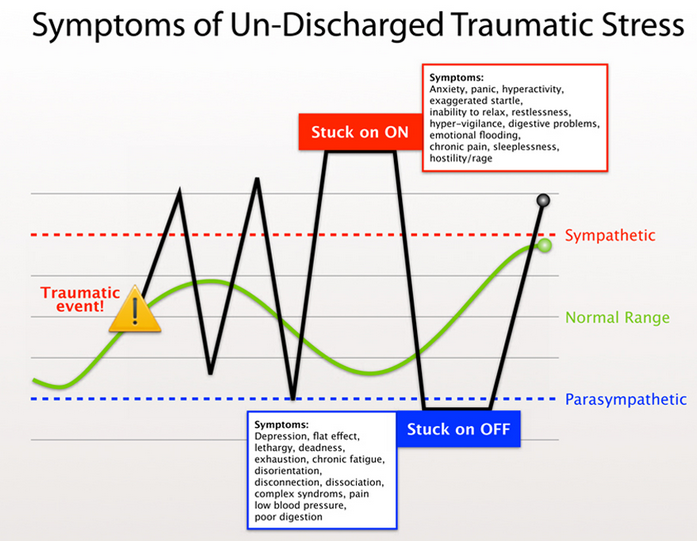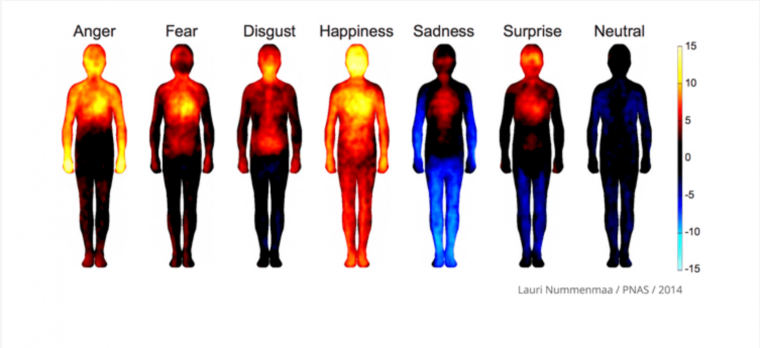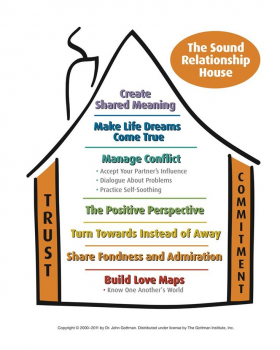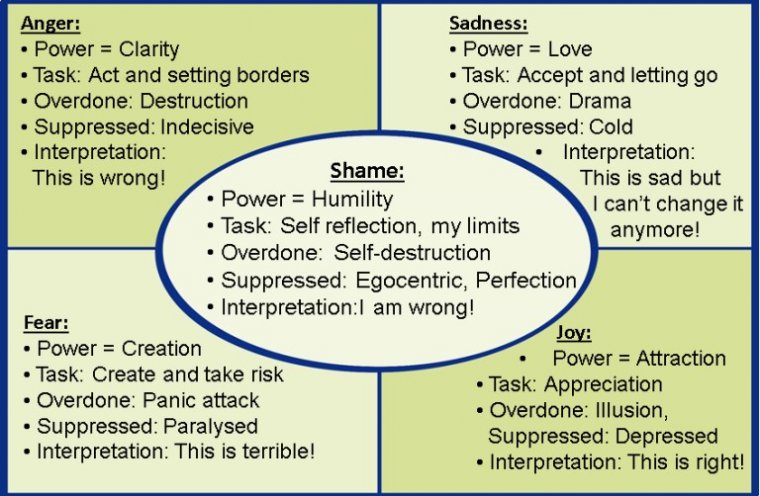Methods I use in Somatic Coaching Session
Guidelines
I offer room for exploring yourself in an authentic, curious and experiencing way and less in a teaching way.
We will question, try out, express, feel, dance, reflect, discover and embody with lots of fun. I want to create a safe enough space with respect, confidentiality and appreciation for diversity.
My work is supported by a number of sophisticated approaches:
- SE= Somatic Experiencing – a body oriented trauma treatment
- ISP = Integral Somatic Psychology- building capacity for embodying overwhelming feelings or emotional pain
- Gottman Relationship Theorie
- Mindfulness and emotional intelligence based on neuroscience
- The power of feelings – Understanding the task and gift of feelings

Somatic Experiencing – a body-oriented trauma treatment
In response to danger, our defense system has three reactions: fight, flight or freeze. Our nervous system bundles an enormous amount of energy for this purpose. At the same time, this is an emotional state with feelings of fear, anger and helplessness. If we manage to flee or defend ourselves, and our organism can discharge that energy and express the emotions, there will be no trauma. If a fight or flight response is prevented/impossible, our organism will instinctively tighten. Simultaneously with the tightening, the energy is strengthened and held in the nervous system. The emotions also become more powerful and our nervous system becomes overwhelmed. At that point, immobility takes over and we will either freeze or give up. A condition usually referred to as shock. Outwardly, this can take various forms: no longer being able to stand on your feet, walking around without seeing what is happening around you, talking hurriedly without emotions,… The result can be that we split off part of our feeling, or that the whole system remains react as if there is still danger. This situation can continue for years. The human freeze response cannot be discharged “by itself” so easily, and this is how trauma symptoms arise. Freezing is an involuntary survival response, meaning that in nature it is no better or worse than fight or flight, nor is it consciously controlled by us. Yet in most modern cultures there is little understanding for this reaction, and it is quickly condemned (and felt) as a weakness.
Calming the overloaded nervous system.

Characteristic of Somatic Experiencing is the way in which the overloaded nervous system is brought to rest. During the treatment, the client is given the opportunity to release the great tension that is stored in his body in small steps. You work directly with the body (autonomic nervous system), without having to touch the client. This method never works with re-experience as the risk of re-traumatization is too great. Telling extensively about the traumatic event therefore does not happen. When the story is worked on, it will be cut into small, digestible pieces, and never more than the body can bear at that moment. A story, a memory of an event is not even necessary. It is perfectly possible to work with the language of the body. An eye movement can sometimes say more than 100 words. The intention is always to create more space in the nervous system, so that the blocked survival energy can be released little by little and there is (back) more capacity and organization. The focus is on trusting and making contact with the self-healing mechanisms that are present in every body.
The founder of Somatic Experiencing is Peter Levine, Dr in both medical biophysics and psychology. He worked, among other things, as a stress consultant in the Space Shuttle project of NASA.
ISP – Integrale Somatic Psychology

Building capacity for embodying emotions
Integral Somatic Psychology™ (ISP™) is an approach to improve therapeutic outcomes through greater embodiment of emotional aspects of experiences and the related suffering from emotional pain.
Integral Somatic Psychology was developed by Raja Selvam, PhD. It is a comprehensive approach to embodiment based on Western as well as Eastern psychology. It is currently taught in over a dozen countries in North America, Europe, and Asia. Integral Somatic Psychology is not another approach to doing therapy. It is a complementary modality developed to increase the effectiveness of psychological work in any therapeutic approach.
The 4 steps of emotional embodiment
1. The situation:
Here we will explore the details of the emotionally challenging situation.
2. The emotion:
Here we talk about innate resistance we all have against unpleasant emotions. And why it is important to face unpleasant emotions
3. The expansion and the regulation:
Then we expand the emotional experience to more parts of the body, to regulate the body and the emotion. We work with defenses in the body, brain, or energy of the client using tools such as awareness, intent, visualization, breath, movement, self-touch, therapist’s touch, bodywork, or energy work.
4. The integration:
Eventually the capacity to stay with and tolerate an emotion increases.

Gottman Relationship Theory
The Gottman Method is an approach to couples therapy that includes a thorough assessment of the couple’s relationship and integrates research-based interventions based on the Sound Relationship House Theory. The goals of Gottman Method Couples Therapy are to disarm conflicting verbal communication; increase intimacy, respect, and affection; remove barriers that create a feeling of stagnancy; and create a heightened sense of empathy and understanding within the context of the relationship.
Check out the online assessment tool the Gottman Relationship Checkup. Created by Drs. John and Julie Gottman, Affective Software, Inc., and The Gottman Institute, this online couples assessment tool automatically scores a relationship’s strengths and challenges and provides specific recommendations for intervention.
Therapeutic Framework
The couple and therapist decide on the frequency and duration of the sessions.
Therapeutic Interventions
Interventions are designed to help couples strengthen their relationships in three primary areas: friendship, conflict management, and creation of shared meaning. Couples learn to replace negative conflict patterns with positive interactions and to repair past hurts. Interventions designed to increase closeness and intimacy are used to improve friendship, deepen emotional connection, and create changes which enhances the couples shared goals. Relapse prevention is also addressed.

Mindfulness and emotional Intelligence
There are two types of intelligence: intrapersonal and interpersonal. When you combine them, you get emotional intelligence, which is the ability to understand your own feelings and emotions as well as those of others. It also includes the ability to use this knowledge in guiding your thoughts and actions.
Daniel Goleman, author of the book Emotional Intelligence, grouped emotional intelligence into five categories: self-awareness is your knowledge about yourself and how you feel; self-regulation is your ability to control yourself; motivation allows you to achieve goals; empathy is a skill that helps you know what others are thinking and feeling (and lets you influence them); social skills enable you to get along with others.
I am trained in Search Inside Yourself, the Google orginated self development program, which combines mindulness and neuroscience as a scientific background.
The power of feelings
“Between suppressing and overreacting on emotions, we discover the power that lies within our feelings.“
Vivian Dittmar

The discovery of our feelings is an exciting adventure. Most people will find themselves in totally new places. We step into areas which we mostly avoid unconsciously. We conquer the jungle in the middle of ourselves. We experience the excitement that lies in fear and the power that lies in anger. Nothing is more fulfilling as the sensation of deep authentic joy, and nothing connects us more deeply with our inner self than sadness. Through discovery of our own feelings we may find what we were searching for a long time already.“
Training approach
“What counts in the end is not what we know, what counts is what we do.”
Our structured and systemic approach is focused on implementing the new knowledge and skills in the daily business routines.
Structured approach:
Before the training:
- Making sure that the right participants attend in agreement with the line manager
- Pre reading and pre course assignments
During the training:
- “Hard Fun – hard work and good fun” is our motto in our training sessions
- Sophisticated theories and principles, case studies and lectures
- Experiential learning: exercises linked to daily reality, role plays, art work, music and outdoor activities
- Self-awareness: psychometric assessments, group feedback, peer coaching
After the training:
- Newsletters to refresh and deepen the learning's
- Individual or group coaching recommended one month after
to clarify open questions and to facilitate exchange of experiences - Feedback to the line managers 3 month after on what has actually been useful is highly recommended
The role of the line manager is critical for a successful implementation of the new skills and competences.
Systemic approach
Ideally it is very helpful to embed the training and development activities in the organizational context and culture. A tailored approach is therefore highly recommended to make sure that systems and processes are in line.


Follow Us